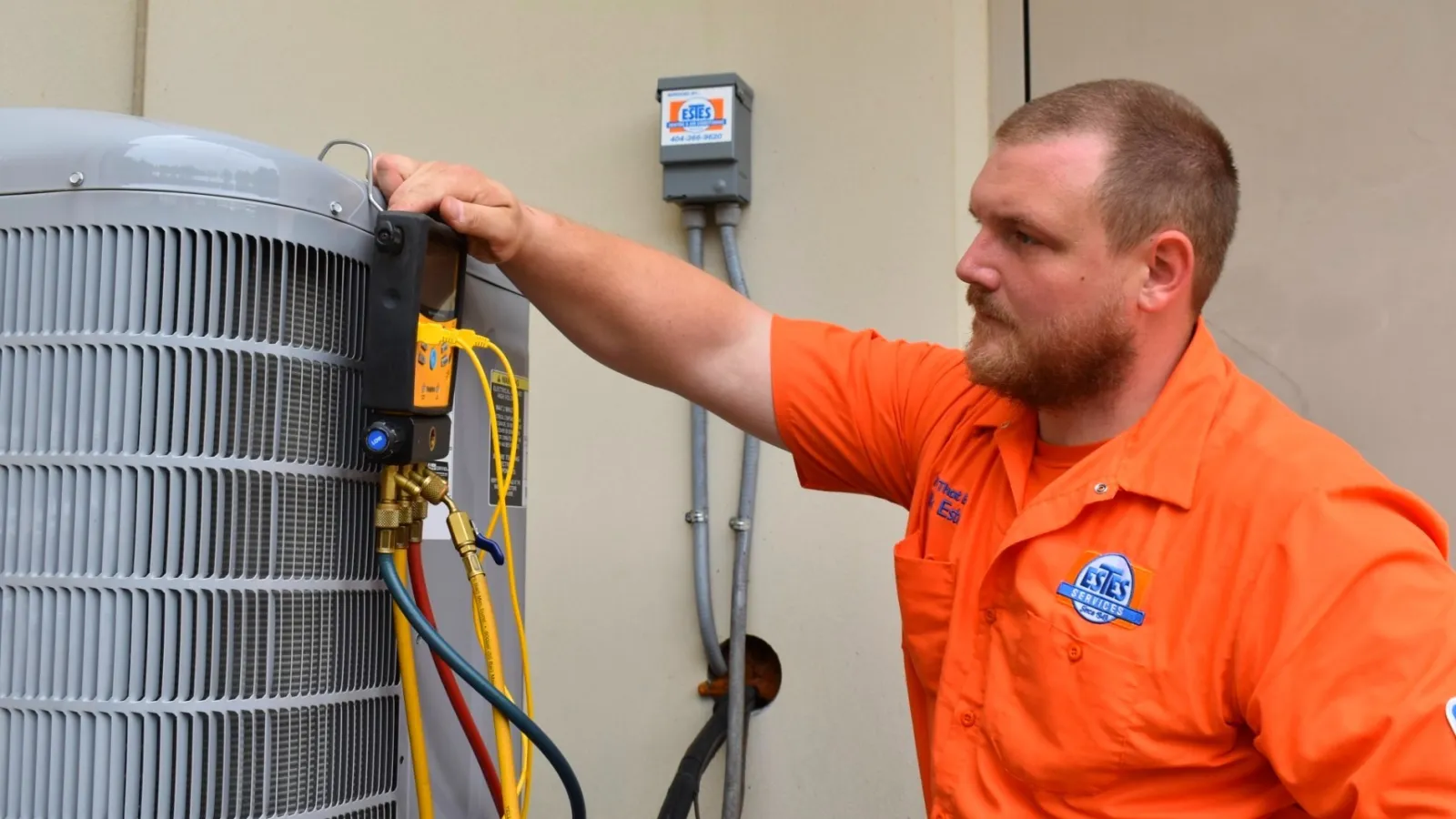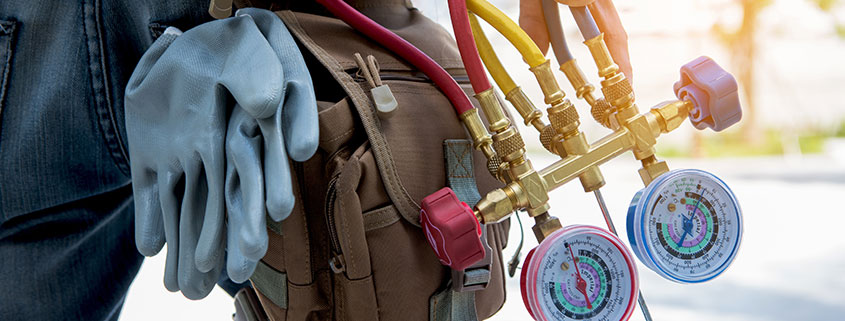Discovering the Solutions Used for Mounting a Heatpump and Furnace in Your HVAC Configuration
When considering a new home heating solution, homeowners frequently encounter the choice in between warmth pumps and furnaces - ductless mini splits. Each system has unique advantages and drawbacks. Specialist installation plays an important role in guaranteeing ideal efficiency and long life of the equipment. Recognizing the nuances of the installation process can influence the efficiency of your a/c arrangement. What particular services can improve the installation experience and guarantee efficiency? The solutions may shock you
Comprehending Warm Pumps and Furnaces: Secret Distinctions
Warm pumps and furnaces serve the important feature of managing interior temperature levels, yet they operate on fundamentally various concepts. Furnaces create warmth by melting gas, such as natural gas or oil, or by utilizing electricity to warm air. This warmed air is after that distributed throughout the home by means of ductwork. On the other hand, heatpump move warm from one place to an additional, frequently drawing out heat from the outdoors air or ground, even in cooler temperatures. This makes them an energy-efficient option for both heating and cooling.While heating systems are usually much more effective in incredibly chilly environments, warmth pumps can offer year-round temperature level control, adjusting to seasonal changes. The setup needs also differ, as furnaces demand air flow systems for exhaust gases, whereas heat pumps call for space for outdoor devices. Recognizing these differences is essential for house owners evaluating their home heating and cooling alternatives.
Benefits of Installing a Heat Pump
Selecting to install a heatpump supplies several benefits that can improve home comfort and power effectiveness. Warmth pumps supply both heating and cooling solutions, making them versatile for year-round climate control. Their capacity to move heat rather than generate it leads to lower energy intake, which can result in significant savings on energy bills.Additionally, heat pumps run silently contrasted to conventional heating unit, adding to an extra calm home setting. They also call for less maintenance, as they have fewer moving parts and do not count on combustion processes.Moreover, heatpump are eco-friendly, as they make use of eco-friendly power resources, lowering greenhouse gas emissions. Their installation might qualify house owners for power performance refunds or tax rewards, even more improving the monetary advantages. On the whole, heatpump stand for a reliable, eco-conscious option for contemporary a/c systems, guaranteeing convenience and sustainability.
Benefits of a High-Efficiency Heating system
A high-efficiency furnace uses considerable energy financial savings, which can cause reduced utility costs for homeowners. Furthermore, these systems add to a reduced environmental influence by using much less gas and releasing fewer exhausts. Enhanced comfort levels are likewise a vital benefit, as these heaters maintain more regular temperature levels throughout the home.
Power Savings Possible
While several house owners look for methods to decrease energy expenses, purchasing a high-efficiency heater can significantly improve energy savings. These heaters make use of advanced modern technology to transform a greater percentage of gas into usable warm, substantially boosting energy efficiency. With a Yearly Fuel Usage Efficiency (AFUE) score frequently surpassing 90%, high-efficiency designs can save property owners significant quantities on their heating prices compared to conventional devices. Furthermore, they run extra silently and require much less constant repair work, which can even more add to overall cost savings. With time, the initial investment in a high-efficiency heater generally pays off with lowered power expenses, making it a monetarily smart choice for those looking to maximize their a/c systems.
Ecological Influence Reduction
Buying a high-efficiency heating system not just advantages home owners financially but also greatly reduces ecological effect. These heaters run with increased energy effectiveness, which translates to decrease greenhouse gas exhausts. By consuming less power, they reduce reliance on nonrenewable fuel sources, adding to a decrease in air pollution and assisting combat environment modification. In addition, high-efficiency versions frequently use innovative technology that decreases waste, additional enhancing their ecological benefits. The change to such systems straightens with worldwide efforts to promote sustainability, urging a relocation towards sustainable energy sources. Consequently, house owners play a crucial function in cultivating a much healthier world while delighting in the advantages of decreased power costs and improved operational effectiveness. Such choices show a commitment to ecological stewardship and accountable resource administration.
Boosted Comfort Degrees
High-efficiency heating systems significantly boost comfort degrees in household rooms by preserving extra regular temperatures throughout the home. Unlike traditional versions, these innovative systems make use of variable-speed blowers and modulating gas shutoffs, permitting exact temperature level modifications. This innovation decreases temperature level variations, guaranteeing that each space continues to be evenly comfortable. Additionally, high-efficiency heaters run silently, adding to a peaceful interior environment. They also enhance indoor air quality by making use of sophisticated filtration systems that record dirt and irritants, supplying cleaner air for passengers. Additionally, their energy-efficient procedure minimizes energy costs, making them a cost-effective option in the future. Overall, high-efficiency heaters not only advertise a comfortable environment yet likewise enhance the general living experience within the home.
Expert Installment Solutions: What to Anticipate
What can homeowners expect throughout the professional installment of a warmth pump and furnace? At first, a detailed analysis of the home's heating demands will be conducted by certified specialists. This analysis guarantees the appropriate sizing of the devices, adding to power efficiency and optimal performance.Once the evaluation is full, the technicians will arrange an installation day, preparing the website for the brand-new system. Homeowners can expect a careful setup procedure that consists of establishing the heatpump and furnace, attaching required ductwork, and guaranteeing proper electrical connections.Technicians will certainly likewise inspect the cooling agent degrees and check the system for leaks, making certain everything runs perfectly. House owners ought to expect clear interaction throughout the process, with specialists discussing each step and dealing with any kind of inquiries. After installation, a presentation of the new system's operation will be given, making certain home owners recognize how to utilize their new heating option effectively.
Routine Maintenance for Optimum Performance
After the expert installation of a heatpump and heating system, regular maintenance ends up being essential for guaranteeing peak performance. This maintenance usually consists of regular evaluations and servicing to recognize possible concerns before they escalate. Professionals typically inspect the filters, ensuring they are tidy and replaced as required, as filthy filters can impede airflow and efficiency.Additionally, inspecting refrigerant levels and guaranteeing electrical links are safe and secure is essential for operational safety and effectiveness. Routine upkeep may additionally entail cleaning up the exterior unit of the heatpump to avoid particles accumulation, which can influence performance.Moreover, scheduling yearly tune-ups assists to prolong the lifespan of the equipment and maintain energy efficiency. Homeowners are encouraged to keep records of maintenance tasks, as this documentation can help in recognizing patterns and making certain timely actions. Routine maintenance not just improves comfort but likewise maximizes energy intake, leading to set you back savings with time.
Repairing Usual Cooling And Heating Issues
Many property owners encounter usual HVAC problems that can interrupt convenience and effectiveness. One common issue is poor home click this site heating or cooling, frequently brought on by unclean filters, blocked ducts, or malfunctioning thermostats. An easy check of the air filter can resolve air movement issues, while obstructed vents need to be cleared for peak performance.Another frequent issue is unusual noises, which may suggest loosened parts or mechanical wear. House owners should pay attention for rattles or squeaks and explore immediately to stop additional damages. Furthermore, constant biking can signify that the system is oversized or that a thermostat calibration is needed.Finally, cooling agent leaks in warmth pumps can lead to decreased performance and ought to be dealt with by an expert. Fixing these typical concerns can help in maintaining a comfy interior atmosphere while extending the life of the HVAC system. Looking for professional assistance when necessary warranties that these issues are fixed successfully and safely.
Expense Factors To Consider for Heatpump and Furnace Installation

Often Asked Inquiries
Just how Lengthy Does It Take to Install a Heatpump or Furnace?
The setup period for a heatpump or heater usually ranges in between 4 to eight hours, relying on the complexity of the system, existing infrastructure, and the experience of the setup group associated with the process.
Are There Funding Options Available for Heating And Cooling Installations?
Financing choices for cooling and heating setups differ by service provider, commonly consisting of versatile layaway plan, fundings, or credit rating choices. Property owners can check out these options to manage prices properly, ensuring comfort upgrades line up with their financial constraints.
What Permits Are Required for Heatpump and Furnace Setup?
The needed authorizations for warmth pump and heater setup typically include structure, electric, and mechanical licenses. Local laws may dictate particular needs, so seeking read review advice from the local authority guarantees compliance and promotes a smoother setup procedure.
Can I Mount a Heatpump or Heating System Myself?
The inquiry of self-installation for a heat pump or furnace arises often. Typically, it is a good idea to consult professionals to guarantee safety and security, compliance with regulations, and suitable performance, as improper setup can lead to considerable concerns.

What Warranties Are Commonly Offered on Setups?
Service warranties on setups usually differ by professional and tools. Generally, they might include restricted life time service warranties on components, one to five-year labor warranties, and certain coverage for the system's effectiveness and performance, showing market standards. In contrast, warm pumps move warm from one place to another, frequently removing heat from the outside air or ground, also in cooler temperatures. Their capacity to transfer warm rather than generate it results in reduced energy intake, which can lead to significant savings on energy bills.Additionally, warmth pumps operate quietly contrasted to standard home heating systems, adding to a much more tranquil home environment. What can homeowners expect throughout the expert installment of a warm pump and heating system? Home owners can prepare for a precise installation process that consists of establishing up the heat pump and heating system, attaching necessary ductwork, and guaranteeing proper electric connections.Technicians will certainly also inspect the refrigerant degrees and test the system for leaks, guaranteeing whatever operates flawlessly. When considering Heating and cooling upgrades, specifically the setup of a warmth pump or heater, comprehending the connected costs is essential for homeowners.